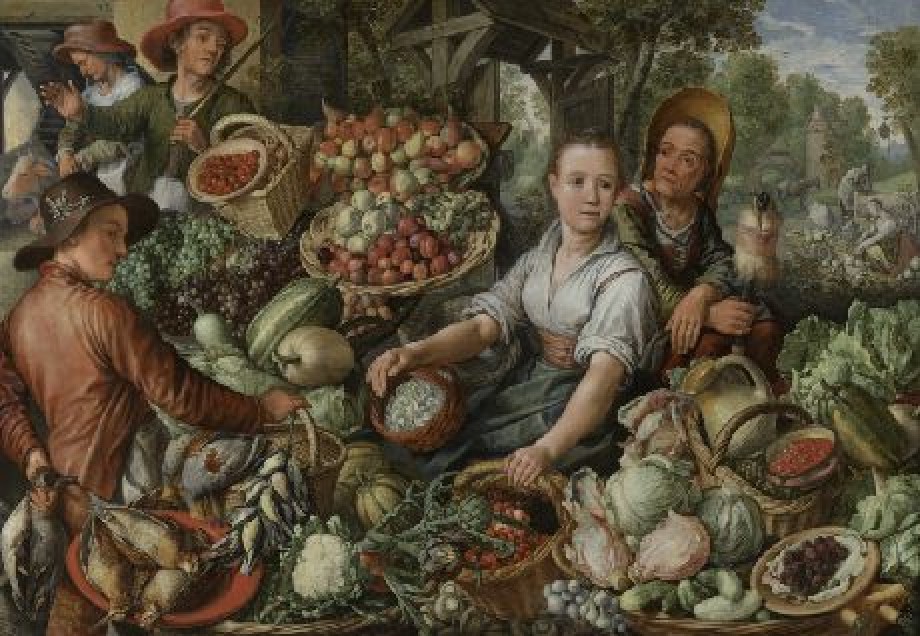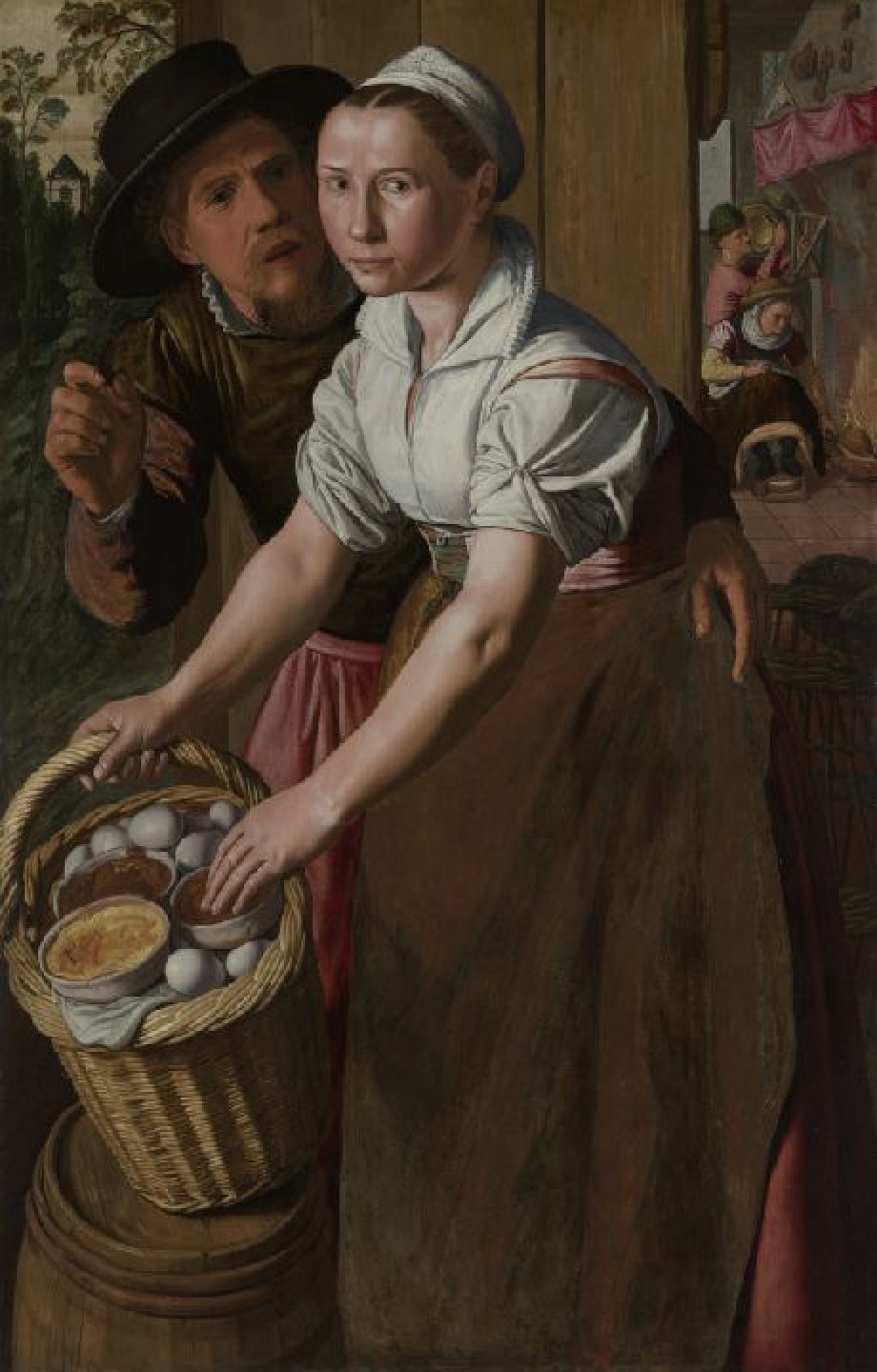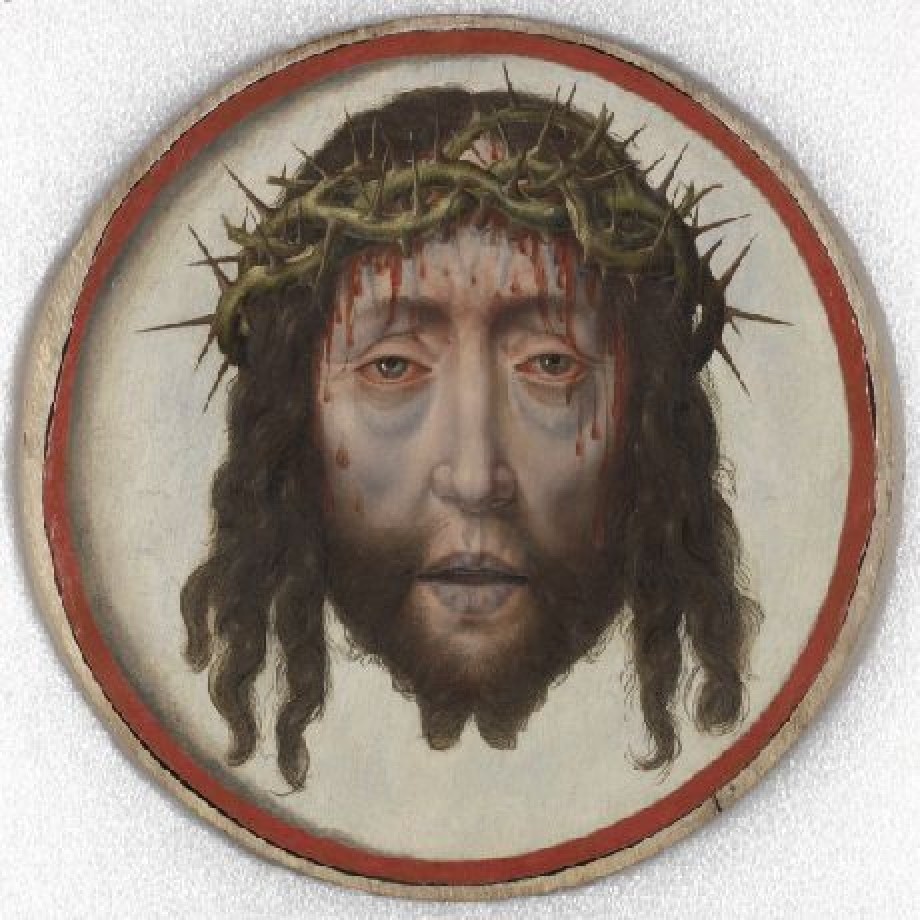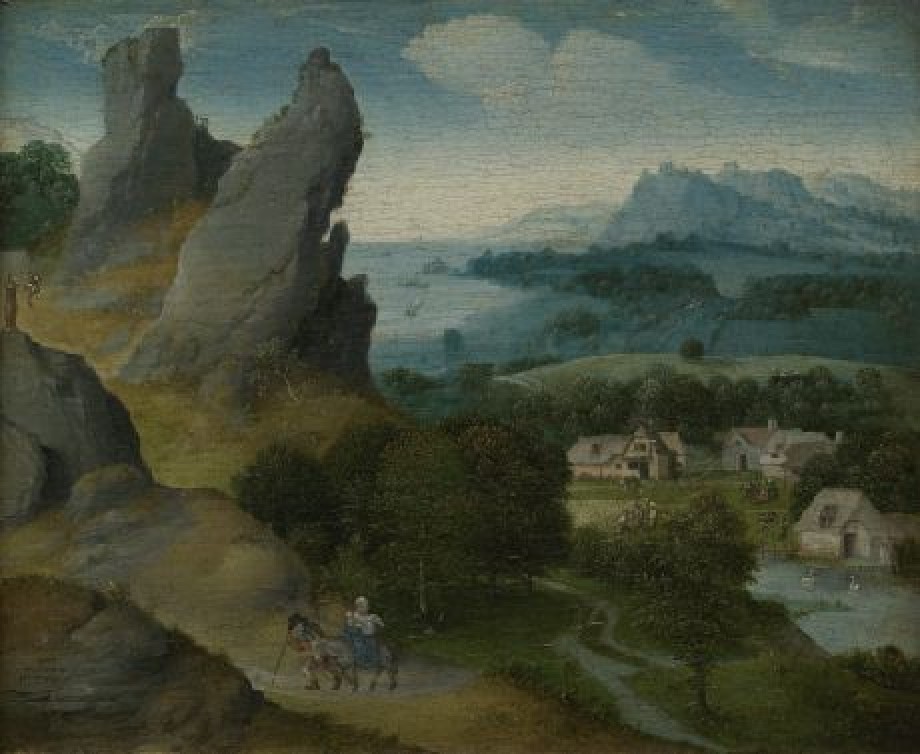The Wedding Dance

Date
c. 1566Period
16th centuryCollection
Royal Museum of Fine Arts Antwerp
Party time! The countryside is alive! Pieter Bruegel hardly gives our eyes a moment’s rest with this joyfully swirling scene. Where, for instance, is the blushing bride in this wedding dance? You can spot her dancing a little to the left of centre – the only woman shown without a headscarf but instead a red hairband and loose locks. As…
Read more
Party time!
The countryside is alive! Pieter Bruegel hardly gives our eyes a moment’s rest with this joyfully swirling scene. Where, for instance, is the blushing bride in this wedding dance? You can spot her dancing a little to the left of centre – the only woman shown without a headscarf but instead a red hairband and loose locks. As for the groom, he is most likely the man shown middle right, with the brown trousers, brown shirt and dark cloak, the colour of which matches the bridal gown. You can just about make out the white aiglets dangling from his hat, a typical ornament for a wedding celebration in Bruegel’s sixteenth century.
How does a painter bring a degree of order and rhythm to such apparent chaos? One way is to repeat particular colours and poses. Another is to demarcate the ‘dance floor’, which Bruegel does here using four oak trees, as well as the man leaning against the tree on the left and the musicians on the right. They are playing the bagpipes, a popular instrument that had sexual overtones in Bruegel’s time. Some of the men’s trousers likewise feature conspicuous codpieces; these were only discovered during recent conservation, having been prudishly painted over at some point.
This is not Bruegel’s original work but a copy produced not much later. We do not know who made it, but the copyist worked with one-to-one scale drawings and reproduced even the smallest details. The original upper part of the painting was replaced in the nineteenth century with the one we see today, with farms, foliage and a horizon. This has the effect of altering the perspective: Bruegel painted the scene from a low vantage point, whereas we now seem to look down on it from above.
Read less











